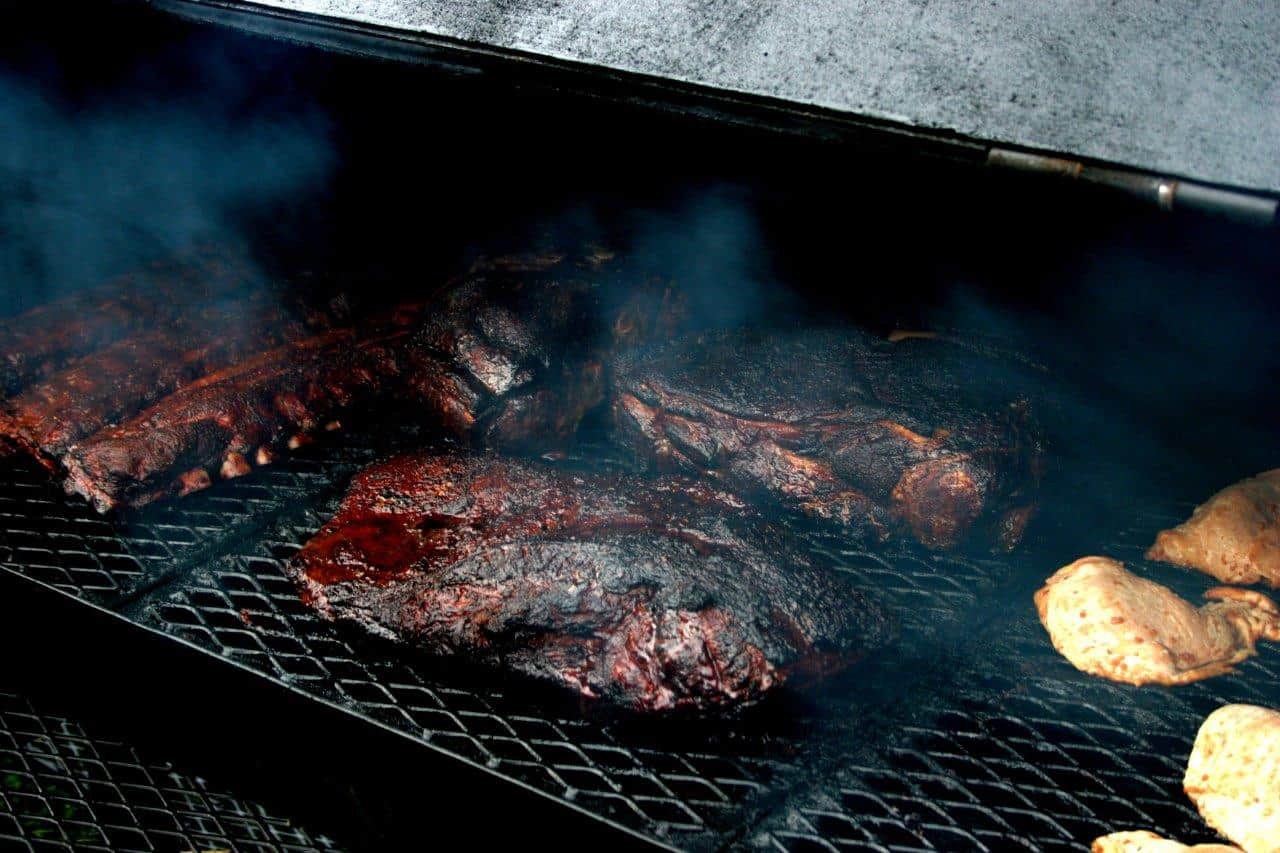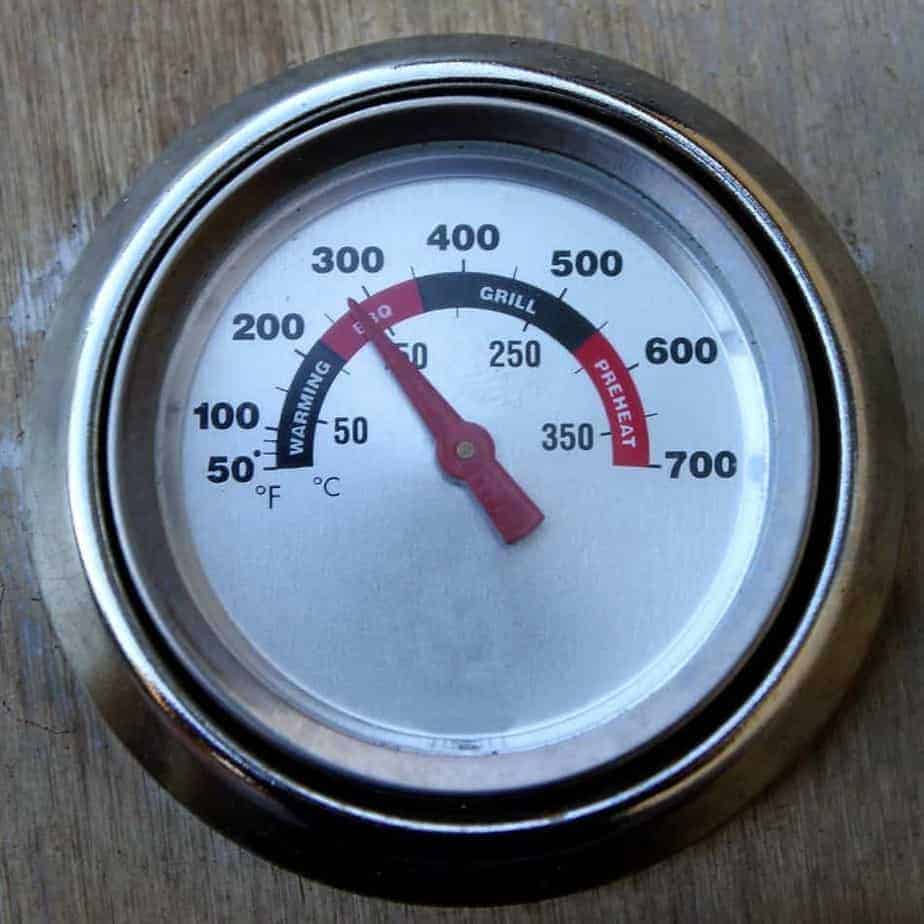Choosing the Best Temperature for Perfectly Smoked Fish
Disclosure: This post may contain affiliate links. If you use these links to buy something we may earn a commission at not additional cost to you. Learn more.
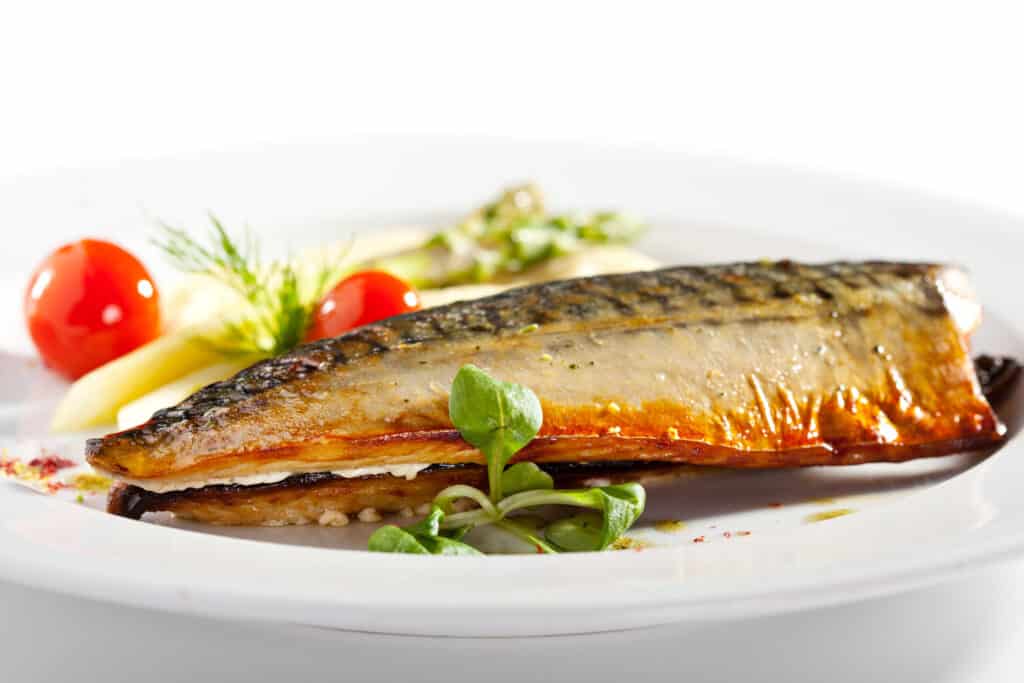
Fish has been a staple of the human diet for thousands of years, and although we don’t depend on it as much as we used to, fish continues to be a favorite meal for many people. Fish can be a delicious and savory entrée when prepared correctly, which includes cooking it sufficiently. Read on to learn more about the proper temperature to cook fish within the context of one of the most popular techniques: the smoking method.
You should smoke your fish between 150 and 200 degrees Fahrenheit. Cooking within this range of temperature ensures that the fish will adequately absorb the smoky flavor and that the fish itself will be thoroughly cooked and safe to eat.
There are a few more factors to consider when it comes to smoking fish that affect how the fish tastes as well as the outside texture. Preserving flavor and moisture is key, but you’ll also want to make sure that the fish is thoroughly cooked. Let’s consider a few of these factors together as we learn more about smoking fish.
Benefits to Cooking Your Fish at a Lower Temperature
A popular method of smoking fish is known as ‘cold smoking.’ Within the process of cold smoking, the meat is smoked at a low temperature, somewhere below 80 degrees, for many hours or even days. A common way of cold smoking is keeping the fish at a temperature under 90 degrees for 6 hours. Obviously, when you lower the temperature, you need to prolong the time you are cooking it. The fact that the moisture is taken out as well as salt added keeps bacteria from growing on the fish.
One important clarification to make is that this does not refer to cooking the meat. Cold smoking is used strictly for preservation purposes as well as permeating the fish with a nice smoky flavor.
Before the advent of refrigeration, cold smoking was a method of preservation that was used to keep fish free of bacteria for weeks on end. The reason this works is that smoking fish for a long period of time without actually cooking the meat removes the moisture, which makes it more difficult for bacteria to grow. In contrast to other methods of preservation, smoking extends the shelf life of the fish without adversely affecting the nutritional content. For our purposes, cold smoking is not necessary for preservation, but some people like to do it to more thoroughly work the smoky taste into the fish and keep the outside of the meat soft.
Because of the excessive salt that you have to use and lack of cooking, the taste of a cold-smoked fish is good but not as good as the taste achieved by hot smoking. It is recommended that you follow up cold smoking by cooking the fish at an elevated temperature before consuming it. Only then will you truly be able to reap the benefits of going through the cold smoking process.
Cold smoking is not intended to be a replacement for properly cooking a fish with the hot smoking process. When done correctly, cold smoking thoroughly penetrates the fish with the desired smoky taste and extends the shelf life of the fish significantly. Due to the delicate nature of the cold smoking process, it is only recommended for those who are experienced smokers or seafood processing experts.
Benefits to Cooking Your Fish at a Higher Temperature
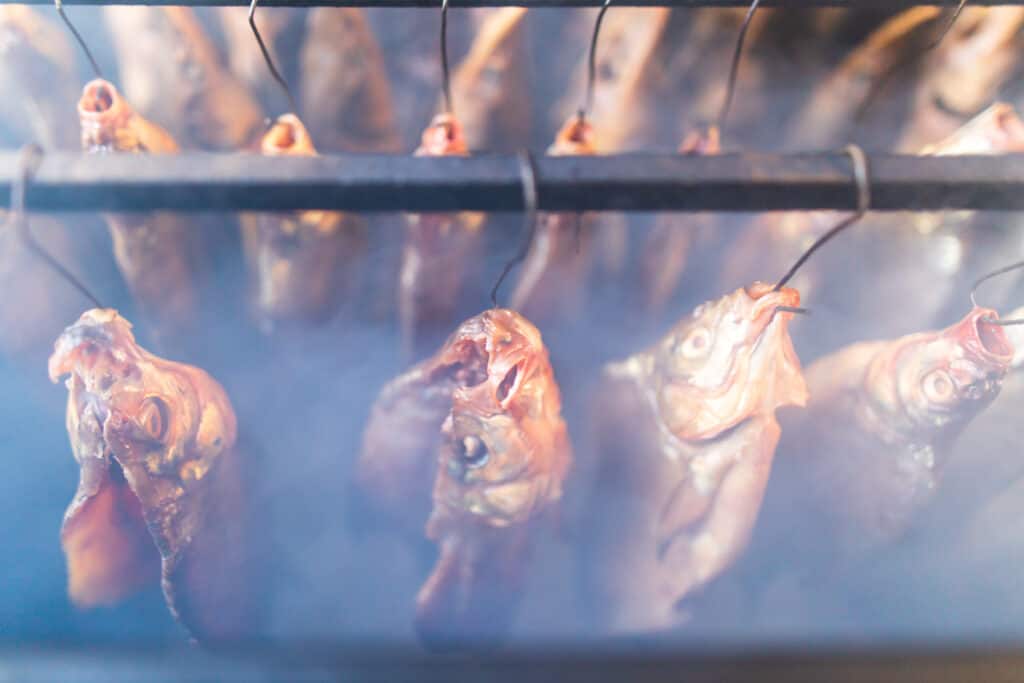
Hot smoking is the more commonly utilized method of smoking fish. In hot smoking, the fish is cooked at a much higher temperature, anywhere from 120-200 degrees Fahrenheit for a much shorter period of time than cold smoking. In contrast to cold smoking which kills bacteria by removing moisture, hot smoking eliminates the majority of disease-causing bacteria through heat.
People tend to agree that the taste of hot-smoked fish is much better than that of fish that has only been cold smoked. This is because minimal or even no salt is necessary. Salt is not a key element of the process, but it can still be added as a spice, so it’s easier to flavor it according to your own preferences. Also, the heat that is used to cook the fish brings out its natural flavors in a way that is simply impossible to do with cold smoking alone.
One of the upsides of using the hot smoking method is that it requires a relatively short smoke time of about 1-5 hours, depending on the desired doneness. Another bonus is that the fish will not only taste delicious but it will also be guaranteed to be safe to consume. It may not have as long of a shelf life as cold-smoked fish, but it will taste phenomenal and you can always store and enjoy the leftovers for the next few days until it spoils.
The one thing you may lose out on as opposed to cold smoking is that the smoke will only have time to penetrate the surfaces of the meat. So all things considered, hot smoking is more akin to barbecuing than anything else, although it does add that hint of smokiness to the surfaces of the fish which appeals to many people and it’s worth it to them to take the extra time to get that smoky flavor.
How is Temperature Related to Cooking Fish Safely?
It is very critical to constantly be vigilant of temperature when it comes to cooking fish in general. Fish is a TCS food, or time/temperature control food, which means that it’s especially susceptible to germs and pathogens so you’ll want to be extra careful. It has been determined that fish needs to reach a minimum internal temperature of 145 degrees Fahrenheit in order to be safe for consumption.
You can measure the internal temperature of a fish by using a food thermometer. Simply take the thermometer and stick it into the thickest section of the fish, being sure to avoid bones, fat, and gristle. Ensuring that the thermometer is deep enough in the fish will give you a correct reading on the internal temperature of your fish.
Some methods of checking temperatures, such as looking at the color or texture are not reliable ways of ascertaining accurate temperature. It is vital to use a food thermometer because you put yourself at risk for foodborne illnesses if the fish is left undercooked. Eating raw or uncooked fish can lead to outbreaks of salmonella and vibrio vulnificus.
If fish is left in what is known as the “danger zone” for too long, it can cause the rapid growth of bacteria. The danger zone is considered to be from about 40 to 140 degrees Fahrenheit. Most of the time when fish is in the danger zone it is because it has been left out on the counter at room temperature. The less time you can spend in this danger zone, the better. You typically don’t want to leave fish out without refrigerating it or freezing it for more than 1-2 hours at the most.
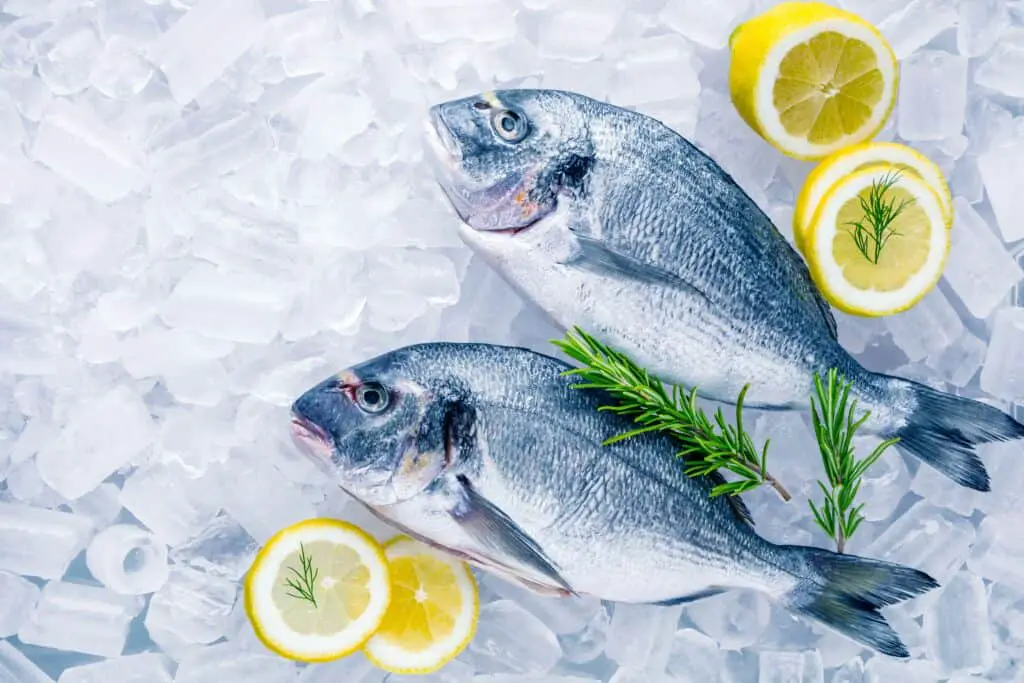
It would also be advisable to keep in mind a concept known as carryover cooking. This refers to the phenomenon that when food is taken off of the heat, it continues to cook for a short period of time. Fish can cook up to an additional 5 or 10 degrees for the next 10 or 15 minutes after being taken away from a heat source.
Fish has no levels of doneness, so once it is cooked sufficiently all it will be doing after that is continuing to dry out. So it’s important to be aware of the internal temperature of the smoked fish and even possibly consider taking it off a few degrees shy of 145 degrees Fahrenheit and let carryover cooking take care of the rest.
What Factors Apart from Temperature Ensure Fish is Safe to Eat?
There are some other factors that contribute to overall food safety when it comes to proper consumption and storage of fish. A common principle is that of ‘clean, separate, cook, chill.’ Clean the fish thoroughly before use, keep raw foods separate to avoid cross-contamination, cook to the minimum internal temperature, and properly store the leftovers within the space of a couple of hours. There are many stages along the way where fish can become contaminated, so it’s crucial to be aware of each one and the aforementioned steps you can take to ensure that the fish does not cause illness.
This can be especially vital for those certain at-risk populations such as the elderly, young children, or the immuno-compromised. Take care to avoid common pitfalls of food preparation and execution so that you can keep yourself and those you love healthy.
If you are starting a business and selling your food, you need to ensure everything is thoroughly cooked to avoid making your customers sick. Taking the time to plan ahead and take these simple precautions may seem mundane, but in all reality, it is the best way of keeping yourself from getting sick.
Safe food handling practices are especially important. Cooking fish to its minimum internal heat will not affect toxins and spores that are engrained into the meat at the time of handling. Wash your hands thoroughly with soap and water before and after handling raw fish with your bare hands. This can go a long way towards preserving the cleanliness of the fish.
I’ve mentioned it before, but it bears repeating that you should strive to refrigerate or freeze leftover fish as soon as possible and never longer than two hours. Fish lasts only 1-2 days in the fridge and it can last anywhere from 3-6 months in the freezer. Leaner cuts will spoil fast while more fatty cuts can last quite some time in the freezer.
If you are going to thaw frozen fish, do it by running it under cold water or by putting it in the fridge. Avoid just leaving it out on the counter at room temperature whenever possible as this practice can expose the meat to bacteria and prolongs the time spent in the danger zone. Although the fish is still partly frozen, as it begins to thaw, the dethawed areas of the fish can begin to grow bacteria.
Tips For Smoking Your Fish
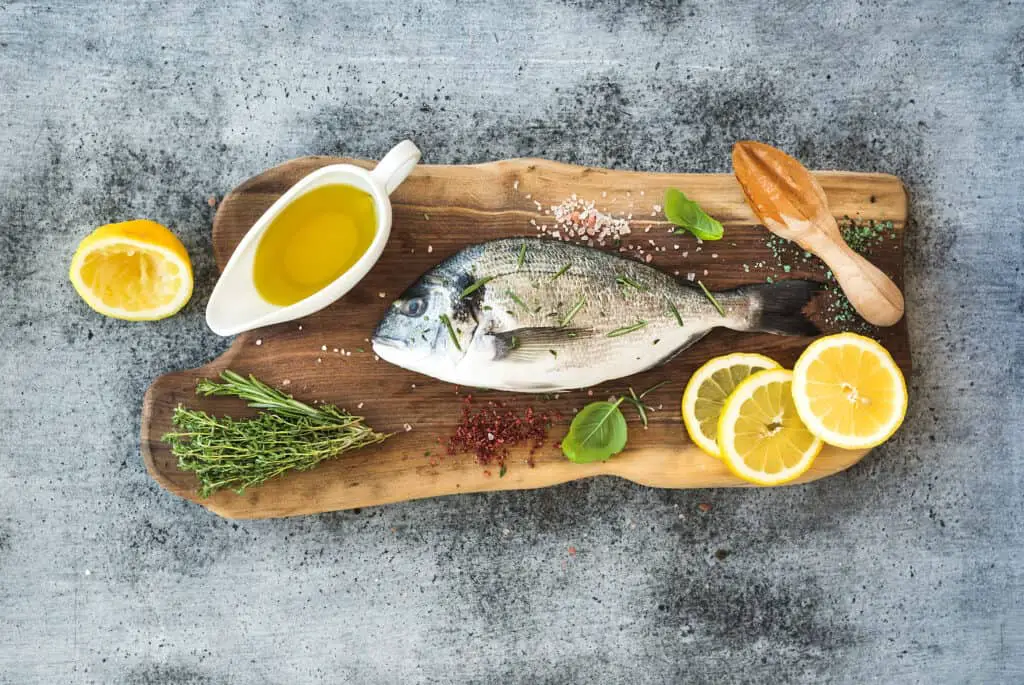
Choose Your Fish
Choosing what kind of fish you’re cooking can change the way you cook it. Below is a chart with a few different types of fish that have been organized under either “oily” or “white flesh”. When choosing what type of fish you intend on smoking, it is important to keep in mind that “oily” fish tend to hold the flavor of the smoke stronger and they will retain more moisture. “White flesh” fish tend to overcook easier than “oily” fish, so keep a special eye on them while smoking.
| Oily Fish | White Flesh Fish |
| Salmon | Trout |
| Tuna | Halibut |
| Sardines | Pollack |
| Sea Bass | Snapper |
| Mackerel | Flounder |
Choosing Your Wood
When smoking fish, wood will obviously be required to create the fire and smoke the fish will be cooked in. Choosing the right kind of wood can change how your fish will come out in the end.
You will want to make sure that your wood has little to no artificial resin on it. Non-treated wood is the way to go. You want to avoid wood that has had any chemicals added to it. These chemicals can be released and can affect your fish. Although there is a variety of woods that can be used to smoke meats, both soft and hardwood, for smoking fish in particular you want to stick with hardwood only. Some options to choose from include fruit and nut hardwood.
Aside from choosing the type of wood, you will use to create the smoked effect, you also need to choose the “cut” of wood you will use. Some choose to smoke their fish on a wood plank/board (which creates a great presentation for those you are cooking for), while others like to smoke their fish using wood chips, wood chunks, or even sawdust.
Before smoking your fish, you need to soak the wood you are using to achieve the smoking effect in the water. Depending on the type and cut of wood you have chosen, it should be pre-soaked for a specific amount of time.


